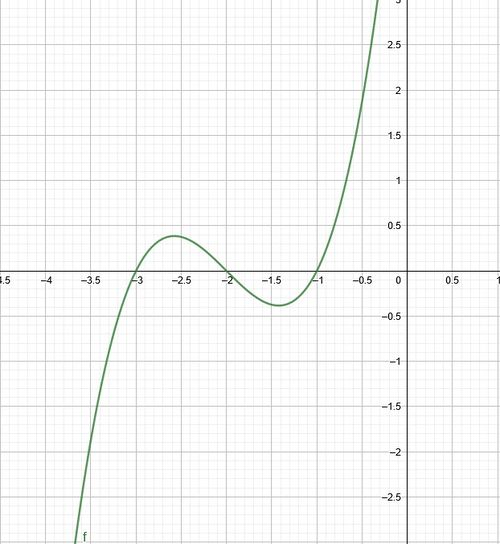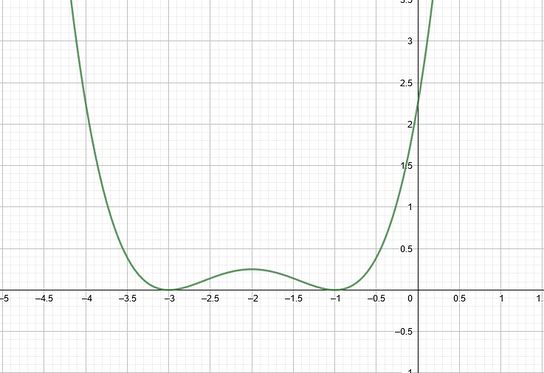Benutzer:Vivien WWU-6/TestseiteAufgaben: Unterschied zwischen den Versionen
Aus ZUM Projektwiki
Keine Bearbeitungszusammenfassung Markierung: Quelltext-Bearbeitung 2017 |
Keine Bearbeitungszusammenfassung Markierung: Quelltext-Bearbeitung 2017 |
||
| (46 dazwischenliegende Versionen desselben Benutzers werden nicht angezeigt) | |||
| Zeile 4: | Zeile 4: | ||
Das '''Monotonieverhalten''' einer Funktion | Das '''Monotonieverhalten''' einer Funktion | ||
…beschreibt den Verlauf des Graphen einer Funktion. | …beschreibt den Verlauf des Graphen einer Funktion. Die Montonie gibt an, ob eine Funktion fällt, steigt oder konstant ist. | ||
| Zeile 29: | Zeile 29: | ||
{{LearningApp|width:100%|height:500px|app=p7pny09y220}} | Arbeitsmethode}} | {{LearningApp|width:100%|height:500px|app=p7pny09y220}} | Arbeitsmethode}} | ||
{{Box| So berechnest du das Monotonieverhalten einer Funktion| | {{Box| So berechnest du das Monotonieverhalten einer Funktion| | ||
| Zeile 48: | Zeile 47: | ||
{{Box| Beispiel: Monotonieverhalten für <math>g(x)=x^2</math> bestimmen | | {{Box| Beispiel: Monotonieverhalten für <math>g(x)=x^2</math> bestimmen | | ||
Zuerst berechnen wir die Ableitung <math>g'(x)=2x</math>. Anschließend berechnen wir die Nullstellen der Ableitung (<math>g'(x)=0</math>) und erhalten durch Umformungen als Nullstelle <math>x=0</math>. | Zuerst berechnen wir die Ableitung <math>g'(x)=2x</math>. Anschließend berechnen wir die Nullstellen der Ableitung (<math>g'(x)=0</math>) und erhalten durch Umformungen als Nullstelle <math>x=0</math>. | ||
Damit sind die zu betrachtenden Intervalle für das Monotonieverhalten <math>(-\infty,0)</math> und <math>(0,+\infty)</math>. Darauffolgend stellen wir eine Monotonietabelle auf und berechnen die Vorzeichen für die Intervalle: | Damit sind die zu betrachtenden Intervalle für das Monotonieverhalten <math>(-\infty,0)</math> und <math>(0,+\infty)</math>. Darauffolgend stellen wir eine Monotonietabelle auf und berechnen die Vorzeichen für die Intervalle: | Beispiel}} | ||
{| class="wikitable center" | {| class="wikitable center" | ||
|- | |- | ||
| Zeile 63: | Zeile 61: | ||
|<math> > 0</math> | |<math> > 0</math> | ||
|- | |- | ||
| | |Graph von f | ||
|<math> \searrow </math> | |<math> \searrow </math> | ||
|'''Tiefpunkt''' | |'''Tiefpunkt''' | ||
| Zeile 124: | Zeile 122: | ||
b) Zeichne nun mithilfe deiner Ergebnisse aus a) den Funktionsgraphen <math>f(x)</math> mithilfe deiner Kenntnisse über sein Monotonieverhalten in dein Heft. | |||
{{Lösung versteckt|1=Dein Graph könnte in etwa so aussehen: | |||
[[Datei:Graph f(x).jpg|links|544x544px]] | |||
Möglich, weitere Lösungen für die Zeichnung des Graphen sind unter anderem Verschiebungen in Richtung der Ordinate, also nach unten und oben oder auch Streckungen bzw. Stauchungen. |2=Lösung|3=Schließen}} | Arbeitsmethode}} | |||
{{Box | Aufgabe 3 | | |||
a) Nach einem starken Regenschauer in Münster steigt der Wasserspiegel im Aasee an. Die Funktion <math>f(x)=\frac{1}{4}x^{3} -\frac{25}{2}x^{2} +144x</math> beschreibt die Zuflussgeschwindkeit in den ersten 72 Stunden. Wann fließt innerhalb dieser Zeit Wasser zu und wann Wasser ab? | |||
b) | |||
| Arbeitsmethode}} | |||
Für Aufgabe 2a) Monotonietabelle | |||
{| class="wikitable center" | |||
|- | |||
! | |||
!<math> -\infty < x < 7,4 </math> | |||
!<math> x = 7,4 </math> | |||
!<math> 7,4 < x < 25,92 </math> | |||
!<math> x = 25,92 </math> | |||
!<math> 25,92 < x < \infty </math> | |||
|- | |||
|<math> g'(x) </math> | |||
|<math> > 0 </math> | |||
|<math> = 0 </math> | |||
|<math> < 0</math> | |||
|<math> = 0</math> | |||
|<math> > 0</math> | |||
|- | |||
|Graph von <math>g</math> | |||
|<math> \nearrow </math> | |||
|'''Hochpunkt''' | |||
|<math> \searrow </math> | |||
|'''Tiefpunkt''' | |||
|<math> \nearrow </math> | |||
|} | |||
Für 2b) | |||
{| class="wikitable center" | |||
|- | |||
! | |||
!<math> -\infty < x < -\frac{\sqrt{15}}{5}a </math> | |||
!<math> f'\Big(-\frac{\sqrt{15}}{5}a \Big) </math> | |||
!<math> -\frac{\sqrt{15}}{5}a < x < 0 </math> | |||
!<math> f'\Big(0\Big) </math> | |||
!<math> 0 < x < \frac{\sqrt{15}}{5}a </math> | |||
!<math> f'\Big(\frac{\sqrt{15}}{5}a \Big) </math> | |||
!<math> \frac{\sqrt{15}}{5}a < x < \infty</math> | |||
|- | |||
|<math> f'(x) </math> | |||
|<math> < 0 </math> | |||
|<math> = 0 </math> | |||
|<math> > 0</math> | |||
|<math> = 0</math> | |||
|<math> < 0</math> | |||
|<math> = 0 </math> | |||
|<math> > 0</math> | |||
|- | |||
|<math> Graph von f </math> | |||
|<math> \searrow </math> | |||
|'''TP''' | |||
|<math> \nearrow </math> | |||
|'''HP''' | |||
|<math> \searrow </math> | |||
|'''TP''' | |||
|<math> \nearrow </math> | |||
|} | |||
{| class="wikitable center" | |||
|- | |||
! | |||
!<math> x=0 </math> | |||
{{ | !<math> 0 < x < \frac{\sqrt{15}}{5}a </math> | ||
!<math> x=\frac{\sqrt{15}}{5}a </math> | |||
!<math> \frac{\sqrt{15}}{5}a < x \leq \ 4</math> | |||
|- | |||
|<math> f_a'(x) </math> | |||
|<math> = 0</math> | |||
|<math> < 0</math> | |||
|<math> = 0 </math> | |||
|<math> > 0</math> | |||
|- | |||
| Graph von <math>f_a</math> | |||
|'''HP''' | |||
|<math> \searrow </math> | |||
|'''TP''' | |||
|<math> \nearrow </math> | |||
|} | |||
| Zeile 201: | Zeile 354: | ||
! | ! | ||
!<math> -\infty < x < 0 </math> | !<math> -\infty < x < 0 </math> | ||
!<math> | !<math> x=0 </math> | ||
!<math> 0 < x < \infty </math> | !<math> 0 < x < \infty </math> | ||
|- | |- | ||
| Zeile 209: | Zeile 362: | ||
|<math> > 0</math> | |<math> > 0</math> | ||
|- | |- | ||
|<math> | |Graph von <math> f </math> | ||
|<math> \searrow </math> | |<math> \searrow </math> | ||
|'''Tiefpunkt''' | |'''Tiefpunkt''' | ||
|<math> \nearrow </math> | |<math> \nearrow </math> | ||
|} | |} | ||
Aktuelle Version vom 18. Mai 2020, 10:09 Uhr
Monotonie
| Graph von f | Tiefpunkt |
Aus dem Ergebnis können wir schließen, dass die Funktion für streng monoton fallend und für streng monoton steigend ist.
Für Aufgabe 2a) Monotonietabelle
| Graph von | Hochpunkt | Tiefpunkt |
Für 2b)
| TP | HP | TP |
| Graph von | HP | TP |
| Hochpunkt | Tiefpunkt |
| Graph von | Tiefpunkt |






